The UK has made progress in fielding autonomous and uncrewed systems across both the Royal Navy and Royal Air Force, according to a written response from Defence Minister Lord Coaker on 24 July 2025.
In the House of Lords, Baroness Goldie asked the Ministry of Defence to detail the state of procurement for unmanned and autonomous platforms in both services.
Lord Coaker confirmed that for the Royal Air Force, Protector and Storm Shroud systems are entering operational service this year. Protector, a next-generation remotely piloted aircraft, is intended to replace the Reaper fleet with enhanced endurance and compliance with UK and NATO airspace regulations.
For the Royal Navy, the development of a Hybrid Carrier Air Wing is underway. This concept aims to integrate crewed and uncrewed aircraft to increase the combat effectiveness of the Queen Elizabeth-class carriers.
As part of Operation Highmast, uncrewed Malloy T150 rotary-wing aircraft have been deployed for logistic support roles, while the Peregrine rotary-wing system has entered operational service in the Gulf.
Lord Coaker also confirmed that “development continues on uncrewed surface vessels and uncrewed underwater vehicles,” with additional systems “under development or undergoing trials in a range of roles across both services.”
He stated that further progress will be supported by ongoing workstreams within the Defence Investment Plan, aligning with broader UK policy goals to expand autonomous capability across the armed forces.
We reported last month that the UK government reiterated that decisions on strike-capable uncrewed aircraft for the Queen Elizabeth-class carriers remain subject to the ongoing Strategic Defence Review, despite growing interest from industry and long-standing planning within the Royal Navy.
In a written answer to Parliament, Minister of State for Defence Maria Eagle said:
“The Strategic Defence Review will inform any requirement for additional strike capabilities for the Queen Elizabeth Class. In the interim, the Royal Navy continues to investigate emerging technologies to understand how they can contribute to enhancing operational advantage.”
Among the technologies being explored are Fixed Wing Autonomous Collaborative Platforms, a reference that industry insiders suggest may include systems such as General Atomics’ Gambit 5, a carrier-capable Uncrewed Combat Aerial Vehicle (UCAV) pitched as a potential complement to the UK’s F-35B fleet.
Speaking about such systems, Eagle added: “Fixed Wing Autonomous Collaborative Platforms have the potential to enhance operational advantage, hence, will be evaluated in collaboration with the Royal Air Force.”
Although no decision has yet been made, UK interest in expanding uncrewed carrier aviation is well established. Under the previous government, then Defence Minister James Cartlidge confirmed that the Queen Elizabeth-class was built with future retrofitting in mind, saying: “The Queen Elizabeth Class Aircraft Carriers (QEC) were built to allow for capability changes over the lifetime of these ships… and this includes a strong focus on uncrewed air systems.”
Could British carriers soon host advanced jet combat drones?
At last year’s ‘Combined Naval Event’ in Farnborough, Colonel Phil Kelly, Royal Navy Head of Carrier Strike and Maritime Aviation, outlined this vision under the banner of the Future Maritime Aviation Force (FMAF) and its internal “Project Ark Royal”. He warned of current limitations, stating: “F-35 mass will not reach level required to resource both QEC with full Combat Air potential.”
He argued for automation and uncrewed platforms to fill this gap, stressing the need to:
“Increase our range, endurance, and persistence in order to build advantage.”
General Atomics, builder of the MQ-9 Reaper and MQ-20 Avenger, has been vocal in promoting their Gambit 5 as a candidate to meet these emerging UK requirements.
“We’ve been thinking of this as a new concept we’re calling Gambit 5, designed for carrier launch and recovery,” said company spokesperson C. Mark Brinkley.
“It could be ISR-focused, like Gambit 1, or some kind of hybrid.”
The platform builds on 15 years of UCAV experience, including 37,000 flight hours with the MQ-20. General Atomics touts its capability in navigation, autonomy, and relative positioning as essential for future carrier-based drone operations.
While no firm procurement decision has been made, the Ministry of Defence’s answers, and the volume of supporting activity from industry, Parliament and Navy leadership, make clear that options to expand the combat reach of Britain’s carriers remain a serious area of development. As Eagle concluded:
“Decisions on future capabilities are subject to the outcome of the Strategic Defence Review, which is looking at the threats we face and the capabilities we need to meet them.”



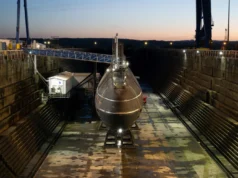
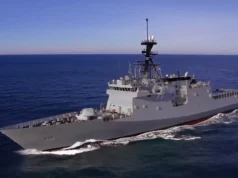
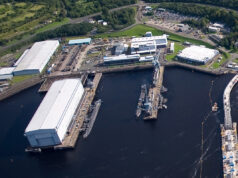


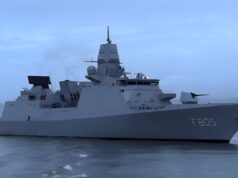

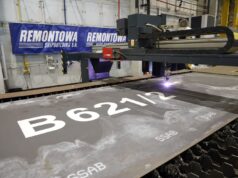
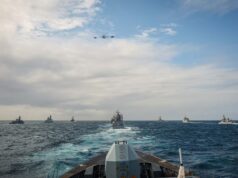


This must be the future deploying drones in a constant countermeasures role, possibly operating ten hours or more a short distance from the host carrier or warship. The longer range drones attacking high risk targets thus avoiding the loss of piolts and aircraft. Imagine within a short time, RN vessels could operate drones in the air and underwater simultaneously, allowing a 360-degree protection. Fortunately, this is no longer something that resides in the pages of a sci-fi novel.
I worry about the appearance of drones being easily shot down maybe more emphasis on stealth might be a good way to go
ii often find myself watching the videos of the taranis stealth drone shame the project was put on ice it looked every inch like the carrier launched drone of the future and didn’t have the string bag appearance of other drones.
Taranis could of been more useful for the RAF, as a land based bomber alternative to F-35A. Unlikely Taranis could withstand CAToBAR ops!
design modifications could solve many such issues taranis looks but it really looks the part
ihr QE Class can’t operate a AEW <aircraft, so a dedicated drone that can do the task is a must have.
MQ9B has been already flown with a SAAB airborne early warning radar suite. It’s already been proven to work.
Now just need HMG to order a few dozen. As well as an armed air to air optimised version
ihr QE Class can’t operate a AEW <aircraft, so a dedicated drone that can do the task is a must have.
Reading all that, apart from I think Gambit 5, nothing new beyond re announcing old news.
Yes a lot of that at present.. essentially what you can read from it is there are a lot of battles going on at the moment pre the actual defeat planning document in the autumn. It seems the defence review was just the starting gun and “rules of the road” for a huge great big inter service bun fight and all this is the waves from that.
I really hope the crew makes Operation Highmast a real success of a trip! And to prove it is worthwhile to expand UKCSG, and order at least 30 more new F-35b’s, to stand-up more FAA Squadrons.
SDR won’t be ordering anything we don’t know about already
J,
Ummm…er…”defeat planning document” as opposed to Defence Investment Plan? Although never personally accused of eternal optimism, even I realize that the funding profile for the MoD will be Improving, albeit slowly, for the foreseeable future. HMG’s forces will be in materially better condition w/In 10-15 yrs., provided general war can be avoided in the interim. Virtually guaranteed. 🤔👍
Quite.
And RAF wanting to control the carrier drones – because…..
I hope RN are being more than firm that with the joint Harrier/F35B messes the drones actually need to go to sea.
Otherwise RAF will come up with a multi task able drone that is 90% tasked on land….because the drones don’t like carrier ops as it isn’t what they signed up for and they would just leave…..carriers are not 4* hotels..
And the royal artillery plods on with watch keeper
Till next year. It’s replacement is Corvus apparently.
More widely, every section is to get a FPV Drone.
OK I thought it had been extended but fair enough
Hi David.
AFAIK that is the extension.
Have you heard differently? I was against cutting it, after it started to work.
No haven’t heard differently read an article about it a few weeks ago can’t remember where that they were being extended you obviously more in the know than I am . I’m waiting to see when Rch Boxer arrives I’m not holding my breath
Another post today has said that Peregrine will soon be able to field LMM martlets after triais were a success.
They’re going with plan B then! I thought they were getting catapults?
Ahhh – imagine how much easier this would be if we’d just kept the original CATOBAR design and were operating F-35C. No need for carrier re-design, a drone industry with clarity on what our requirements are, options for a diverse air wing.
I wonder what those few million in savings were actually spent on?
One thing I’ve learned about MOD procurement is that you have to laugh. Because if you don’t, it’ll make you cry…
You realise catapults cost up to a Billion per carrier right, plus hundreds more crew needed
How much was spent in the re-design for the class? How much in the actual purchase and maintenance of the more expensive B? How much is the additional payload and range of the F35C and the flexibility of CATOBAR worth to the RN?
The French managed it on a fraction of the budget.
The class was a Stovl design in its final form, not a Catobar.
The C is not much cheaper than the B, are you really suggesting the maintenance costs will make up the difference.
There is no flexibility in Catobar for us, only more complications and costs, we’d only have E2D, if we were lucky, not any of the other gubbins.
It was not a fraction of the budget. CDG cost 4 Billion Euros, that’s more than a single Qnlz cost before you include government mandated delays
Unless I’m missing something, I didn’t suggest that it was Catobar in it’s final (and current) form. Am I mistaken?
Are you seriously suggesting that maintenance costs of F35B, a plane which is already falling well below hoped readiness standards, do not warrant serious consideration? What’s the projected lifetime of them, 40+ years?
Google seems to dissagree with your assesment of cost, though I concede it’s less about comparing to the French, and more about asking if it was worth the cost back then, for todays RN.
The F35C is still not cleared to operate from the Ford class carriers. They can only operate F18s and E2s. Would be slightly embarrassing for the UK, with two “super carriers” and it only being able to operate helicopters!
I don’t feel that the US are embarrassed aboout it. Nor was the UK gov seemingly embarrassed about forgoing carriers all together for a significant period of time.
Aren’t the issues with F35C basically teething? Something to do with blast doing damage to the ships? I recall a similar problem with F35B on the QE decks.
It’s all relative, but the end result is a worse plane for the RN and a carrier that isn’t fit to adapt to emerging technologies without significant new investment.
F35B provides the same capability as the C. Only the way they land and take off is different. F-35C does carry more fuel. But bring back fuel for potential missed bolters cuts into that extra endurance significantly. Training requirements are higher. You need larger flight deck crews. Refits will be longer and more expensive. So when you weigh it all up, QE class in its current configuration with F35B presents the all-around best value for the budget available. Though I admit catapults would likely make future drones easier to integrate. Especially larger longer-range drones.
Agree, very well expressed.
People underestimate the costs and complexities of catapults as well as the huge requalification cliff edge for pilots.
“In the interim, the Royal Navy continues to investigate emerging technologies to understand how they can contribute to enhancing operational advantage.”
Same old bullshit. Trapped in an unending cycle of trials. Nothing actually bought.
Exactly.
They’re utterly terrified of buying something for fear of it being wrong.
That Peregrine/Schiebel UAV should be on every RN vessel at least.
A proven type I believe?
Nope. On 1 Frigate only I think? Lancaster. Herself due for withdrawl.
Like it must be 10 – 15 years ago since the RN trialled Scan Eagle., and several other types since. Did someone’s dog eat the notes? Multiple buys of Peregrine is a no brainer, it needs no more studies.
And they’ve gone forvthe S-100 when there’s the more capable S-300. Horses for courses i suppose but if there’s something more capable why not go for that or a mix of both pending on vessel and ops?
Stuck with ordering penny packet quantities of lesser types for interminable trials. What exactly are they waiting for ? Millennium Falcon 2.0 ?
I believe you can put a S-100 in a 20ft container. It would give a batch 2 River OPV a significant uptick in capability.
ihr QE Class can’t operate a AEW <aircraft, so a dedicated drone that can do the task is a must have.
There’s no rush; it’s not like we have any frigates to put them on. 😂
Curious that after cutting the next tranche of F35Bs from 27 to 15, we are still looking to increase carrier AirPower.
The head of carrier aviation says “ F35 will not reach the level required to resource both QEs with full combat air potential.” So why make matters worse by switching to 12 F35A?
Looking for a successor to Crowsnest makes sense. Faffing around with UCAVs that only exist on paper and would require costly cats and traps is unnecessary.
A lot of waffle to say that absolutely nothing is actually happening where it matters, on the front line.
All this extra investment in systems, asswts, which must be in the multi millions and no mention of any increase in the defensive armaments on these carriers? The near empty sponsons are there to see. Looks incomplete. Why is this so difficult to fix? Consolidate on 30/40mm, Ancilia, Dragonfire, maybe CAMM if it can squeezed safely in somewhere? Any SEA TWS for anti torpedo defence? Besides all this it looks great and welcome to Australia! 🇦🇺 🇬🇧 🚢
*assets
This is all very well and good but competent airforces could overwhelm the carrier group in a saturation attack. The few available F35bs that we have just can’t carry enough missiles internally to rebuff a significant opposing force. The apparent American doctrine of using older airframes as missile trucks has merit, since the F35Cs acts as a stealthy eyes and ears for the fleet but due to the nature of network warfare, they don’t actually have to do the fighting themselves. We frankly need more planes… more ships, more guns, more everything…
What’s the saying?
Give ’em third best, as second best is late and overpriced, while first best never comes.
Malloy heavy lift drones seem to be doing the business and I believe have launched Martlet missiles and Peregrine is proven and out there. Buy more, now.
Worry about better ones after a few more consultations and dithering .
AA
Is the idea here to simple increase the number of flying things or is it more to do with fielding flying things that can do more than drop bombs, or both?
googled queen Elizabeth carrier without ski ramp the other day and found a artist impression of how they’d look. they looked like proper carriers. catapults would have increased aircraft capacity and options.but like turning rivers into corvette etts, we’ve done the subject to death.
Morning Andy, why not have both catapult and ski jump, even a retractable version of the later if that was at all possible? Too late now. Have to make do and improve.
Drones for the Carriers fair enough but more F35b please 🙄
caster delivery than we’ve had so far.
Er, the Strategic Defence Review was published in full on June 2nd this year-what’s all this ‘the Strategic Defence Review will inform any requirement for further deep strike” nonsense?
The light-blue should have nothing to do with the carriers, the fact that they do and influence is indicative of the stupidity of HMG and the MoD.
.
.
In saying that the senior service does itself no favours by allowing the junior service(s) to dictate to it and without better leadership, this will continue.
.
.
Someone else commented on rolling the light blue back into into its historical predecessors (i.e. wind back to pre April Fools Day 1918), I’d argue although logical, like what does the RAF do that that the FAA or AAC could not do more efficiently, the answer of course is the light-blue is good at marketting.
Sue LM for $10bn for their BS of not adapting UK weaponry to the F35B’s we bought. See if that speeds things up. I dont believe them being unable to do this quicker; its become what one has come to expect. We are far too nice.
Moderately expanding the F35b procurement to have some redundancy for FAA operations will be needed, but the RAF should focus on cheaper F35a and additional Typhoons squadrons until tempest is ready.
The carriers should expand capacity with unscrewed aircraft for refuelling, surveillance and extending F35b with ‘autonomous / loyal wingman’ fleet protection or strike capability. Deck modifications to allow launch and recovery of uncrewed aircraft will be required, but not a CATOBAR refit.
Cheaper dispensable drones can more easily be added and launched.
googled queen Elizabeth carrier without ski ramp the other day and found a artist impression of how they’d look. they looked like proper carriers. catapults would have increased aircraft capacity and options.but like turning rivers into corvette etts, we’ve done the subject to death.
The F35b and ski ramps are given. But if any sizeable uncrewed aircraft or drone operations are expected then perhaps some inclusion of an angled deck option would suffice.